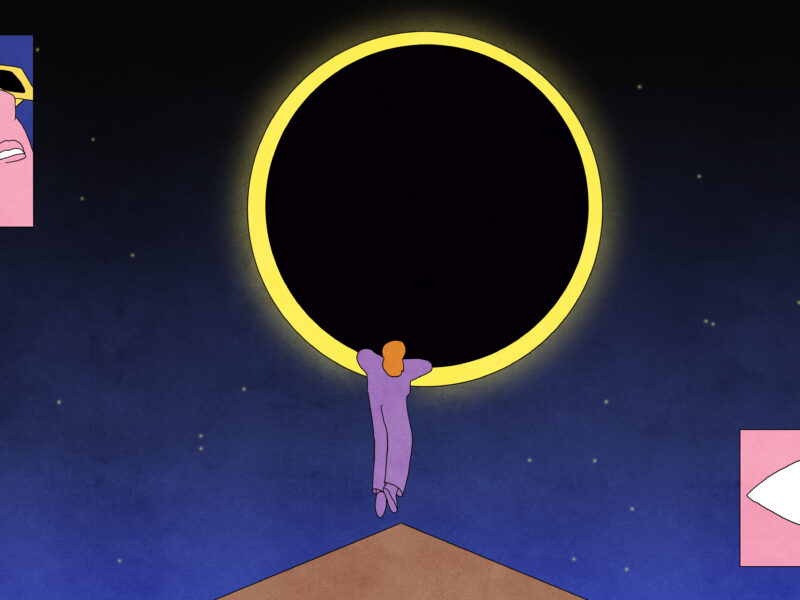How can any institution be ethical when it’s an obsequious representation of the values of its extraordinarily rich funders?
Follow the money. That was the dictum that propelled Woodward and Bernstein in All the President’s Men; it was also the hunch Andrea Fraser followed when she published 2016 in Museums, Money, and Politics—essentially the museum world equivalent. This latter work touts a cast of familiar characters—Basses and Sacklers and Kochs, oh my!—navigating finger food in evening wear, far from the madding pillories of MSNBC, but still dedicatedly pushing the same agenda through their presence on museum boards. This is America: Perhaps it’s only natural that Harlan Crow, the same hand that greases Clarence Thomas, has built a Dallas museum of Asian Art (to say nothing of his so-called “Garden of Evil”). Or that it took Laura Poitras’s 2022 documentary about Nan Goldin’s crusade against the Sackler family getting all the way to Oscar season for their misdeeds to actually come to light. Follow the money—at any museum or in any national political campaign (because yes, it’s the same money, as Fraser deftly and exhaustively points out)—and it will only lead to one familiar place: disappointment.
Or, in this case, a multimillionaire’s doorstep.
Shelby White, whose money built the Metropolitan Museum of Art’s Greco-Roman wing, visited by more than 3 million people annually, is in a pickle. An avid collector of antiquities, White is no stranger to law enforcement, having previously cooperated in repatriating artifacts she had purchased to their countries of origin, including Yemen, Turkey, and Italy. Yet little could have prepared her for the sublime institutional irony of the scandal that unfolded in her living room earlier this year. According to The New York Times:
[The police] showed up, unannounced, with a search warrant at her spacious Sutton Place apartment in Manhattan at 6 a.m. The rooms inside were filled with antiquities, some of which had been purchased from dealers who would later be accused of trafficking in illicit artifacts. Many were displayed in their own nooks or cabinets, and set off by lighting that enhanced their appeal. “It is literally a museum,” said Matthew Bogdanos, the head of the district attorney’s Antiquities Trafficking Unit, which visited the apartment several times.
The collection removed from her apartment included were four stolen sections of an Anatolian columned sarcophagus valued at $1 million, a bronze statuette of the emperor Lucius Verus valued at $15 million, and a Roman bronze bust of an unknown man valued at $3 million—by any definition, a veritable trove. Rather than marvel at the secluded museum she’d amassed, however, I found myself wondering: What is a museum if not a rich person’s living room someone deigned to open to the public? And what, exactly, is the point of putting all of this stuff in one place?
Most of the objects we see displayed in museums grapple with the Big Mysteries. Whether oriented toward art, culture, ethnography, or science, a museum enshrines systems of understanding it all. These institutions collect, constellate, and disseminate a narrative of perceived truth. The problem inherent to any of this is the same as with any narrative: the limitations (and biases) of the narrator. Humans are blinkered by the boundaries of their own perception and countless barriers to understanding imposed by the context and times in which they live. Heap on top of this the basic problem of who has the privilege to curate or collect in the first place, and—last but not least—who holds the aforementioned purse strings that keep the lights on at any institution in question, and the narrative gets muddy. Joan Didion famously wrote that we tell ourselves stories in order to live, but what are we keeping alive?
At its core, an art museum is essentially a narrative of empire. If, as Napoleon quipped, history is a set of lies agreed upon, a museum is their physical manifestation. Aptly, the Met—the grandest, most august museum in a city that likes to think of itself as the center of the world—boasts all the baubles that connote having made it, including a few once owned by Napoleon himself. Cleopatra’s needle, the Temple of Dendur, Greek goodies faded polychrome or ghostly blanched, Persian carpets, Old Masters, Estruscan jewels, Japanese lacquer, South Asian sacred sculpture, Chinese vases, Senegalese masks, Polynesian canoes. The good, old stuff! All in one place, the best of it all from every corner of the globe.
But the best according to whom? The Met is a museum of objects rich people, like Shelby White, value; it is a narrative of wealth and what signals it. Accordingly, the place has no shame at trafficking in stolen goods, and enlisting lawyers to stonewall the looted parties (e.g., Greece) with reams of contracts and receipts to establish provenance. It’s a Red State mentality with Blue State wall text. The institution has the dirty opioid money and the dirty oil money. Its worldview is unabashedly human-centric, each wing featuring a different culture trying to figure out what the hell it all means—most often, a whole lot of fucking, being born, and dying. Religious fanaticism is rife. Social hierarchy abounds. Women are mostly subjugated and objectified. The Hall of Arms and Armor would make any 2nd Amendment enthusiast blush with delight. Inveterate elitists, the Met celebrates the winners. It doesn’t have time for the downtrodden or the poor because they didn’t leave nice enough shit behind. Or any shit at all.
This is the tale nailed literally and metaphorically by Andrea Fraser in her book and throughout her career as a performance artist. As a writer, similar institutional critique has been my own stock and trade: Recently, I was engaged by artists Caitlin McCormack and Kat Ryals to write text for their exhibit at Elijah Wheat Showroom, Souvenirs of the Wasteland. The show imagines what a museum would look like after the apocalypse, specifically imagining objects more akin to the Met’s cousin across Central Park, the American Museum of Natural History. In a sense, the show is a museum of unnatural history—a curated glimpse of the world left behind after human intervention. In this installation, microplastics have usurped the Hall of Gems; the Great Pacific Garbage Patch drifts triumphant as a continent—terra firma on a planet mankind has rendered uninhabitable. McCormack and Ryals offer a survey of what thrives in the Anthropocene’s wake: mutant lifeforms melded with garbage, eerie radioactive hues, and dark odes to effluvium, ephemera, fast fashion, and immortal trash.
Contributing wall text for this show gave me the chance to think about how the AMNH presents another model of institutional storytelling: What, one may ask, is a museum of natural history attempting to catalog? And why and how is this very peculiar blend of objects in it? How do we get from, say, a tree stump from the Redwood Forest to a Chinese wedding chair? The museum-hopping visitor will notice the same object that is considered “art” on the east side of Central Park becomes a “craft” once it has migrated to Central Park West. “Folklore” presents a thorny problem as a catch-all term when it refuses to elevate a cultural practice to literature, organized religion, or art, thus othering whichever culture it is attempting to include. The AMNH is a blind spot, enshrined. And despite seeming more innocent than the Met, the AMNH is also on the take from the Brothers Koch; Richard Gilder, for whom the museum’s new wing is named, specialized in short-selling.
Still, the AMNH attempts a more science-centric—ergo, necessarily progressive—worldview. True to progressive form, it also cannot see why its stances are problematic. It is a paean to preservation full of dead, endangered animals. There are literal dinosaurs. Its Hall of Human Origins is named for the family of an unevolved former NY governor. Everyone claims they are there for some granola story of the Earth’s origins, but really, the whole operation is funded by the Hall of Gems—containing some of the bloodiest of diamonds and other problematically sourced stones in the world, much of it tracing back to America’s echt-capitalist, J. P. Morgan.
AMNH is also a core sample of outmoded notions of progressivism layered on top of one another and bisected in vitrines, from problematic conservationist Teddy Roosevelt (whose hats are on display downstairs) to present patron saint of PBS and New York native son Neil deGrasse Tyson. It makes one wonder not only about the vastness of the universe but how our own NPR perspective on it will soon become invalid. Margaret Mead was undoubtedly what would have passed as “woke” in her own time, but her legacy is displayed in a way in the AMNH that means the only name and face in the whole area of the museum that concerns Oceania is that of a white woman. She is further celebritized in a warren of rooms strictly about her, and while there are attempts to correct the narrative, they are inconsistent and frequently at odds with one another. On the first floor, the diorama of Peter Stuyvesant meeting unnamed Leni Lanape (Hackensack) has an incredibly powerful treatment of corrective scholarship on the glass. Meanwhile, upstairs, we find “exotic” cultures othered in dioramas depicting far reaches of the globe from Tashkent to Timbuktu; but we don’t see, for example, a diorama populated by a blonde Swedish family arguing over which allen wrench to use in front of some IKEA furniture.
Both the Met and the AMNH are flawed. One model tells the story of the human perception of meaning and our quest to make the mortal coil a bit more bearable; it is a story of status and hierarchy, and the ugly, inescapable truth that inequality and the suffering of most are the cost of beauty and luxury for few. The other model tells the story of the impact of humans on Earth, with the great caveat that it’s the world’s most unreliable narrators telling it: humans. (And, again, the ones footing the bill to even tell the story in the first place are arguably some of the worst among us—many of whom directly profit from the planet’s degradation.)
No matter how intricate or well researched a palimpsest—at any cultural institution—it will never solve the problem of perspective. We can never escape ourselves or the times in which we live. Maybe this is the best we ever do—and maybe that’s fine. Maybe seeing museums as deeply flawed but instructive monuments to that attempt at understanding, rather than as definitive catalogs, is the best way to allow them to teach us about ourselves. Sometimes, we need the reminder not to believe something just because it’s written on the wall.



